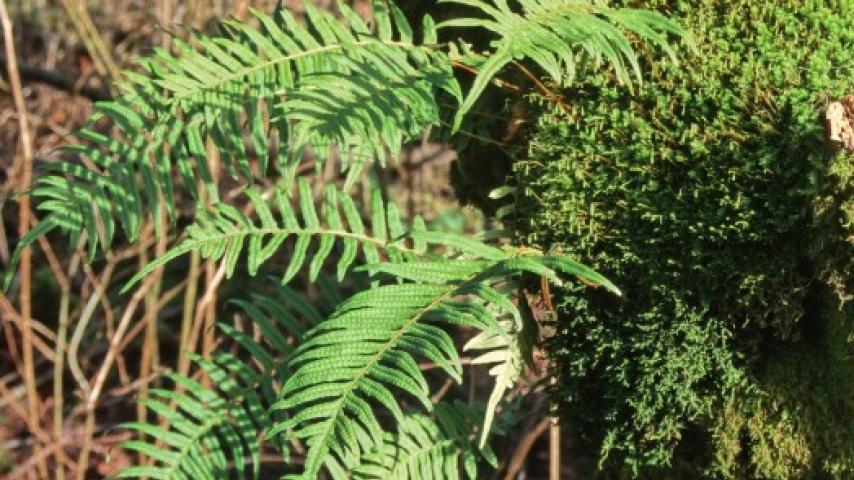Licorice Fern (Polypodium glycyrrhiza)
Licorice Fern is another of the species characteristic of the wet coastal lowland regions (up to 700 m) of the Pacific Northwest, from southern Alaska to northern California (with an isolated population in northern Idaho).

KINGDOM Plantae - PHYLUM Pteridophyta - CLASS Pteridopsida - ORDER Polypodiales - FAMILY Pteridaceae
In this zone, it grows primarily in wet forests, where it is especially common as an epiphyte on the trunks of Bigleaf Maples. It also grows on logs, rock faces, and wet, mossy ground.
The reddish, scaly rhizome of this evergreen fern creeps along the tree trunk or rocks and anchors itself by small roots. It is often hidden by moss. The fronds are triangular and as long as 50 cm, usually smaller. The leaves are only once pinnately divided, each leaflet with pointed tips and finely scalloped or toothed margins, the stipe a naked stalk. The plants remain green and luxuriant during droughts, unlike other polypodys that dry and curl at those times, rehydrating after rains.
The conspicuous round brownish dots distributed on either side of the main vein under each leaflet are the sori (singular sorus). The spores in these reproductive structures are spread by the wind and probably by rain as well. Sporulation occurs from late fall to spring.
This fern was an important medicinal plant for a number of Native American groups, used raw, boiled, or baked. The rhizomes were chewed for their licorice flavor and used as a remedy against colds, coughs, and sore throats—the cough drops of the time. Several species of the genus (called polypodys) have long been used medicinally in European cultures as well.
We take for granted the existence of our common organisms, and we often don’t think of the history of our knowledge about them or the origin of their names. The Licorice Fern was formally described as a distinct species by D. C. Eaton in the American Journal of Science and Arts in 1856. The original specimens came from southwestern Oregon. Glycyrrhiza means “sweet root,” so Eaton probably knew something about the human use of the species even at that time.